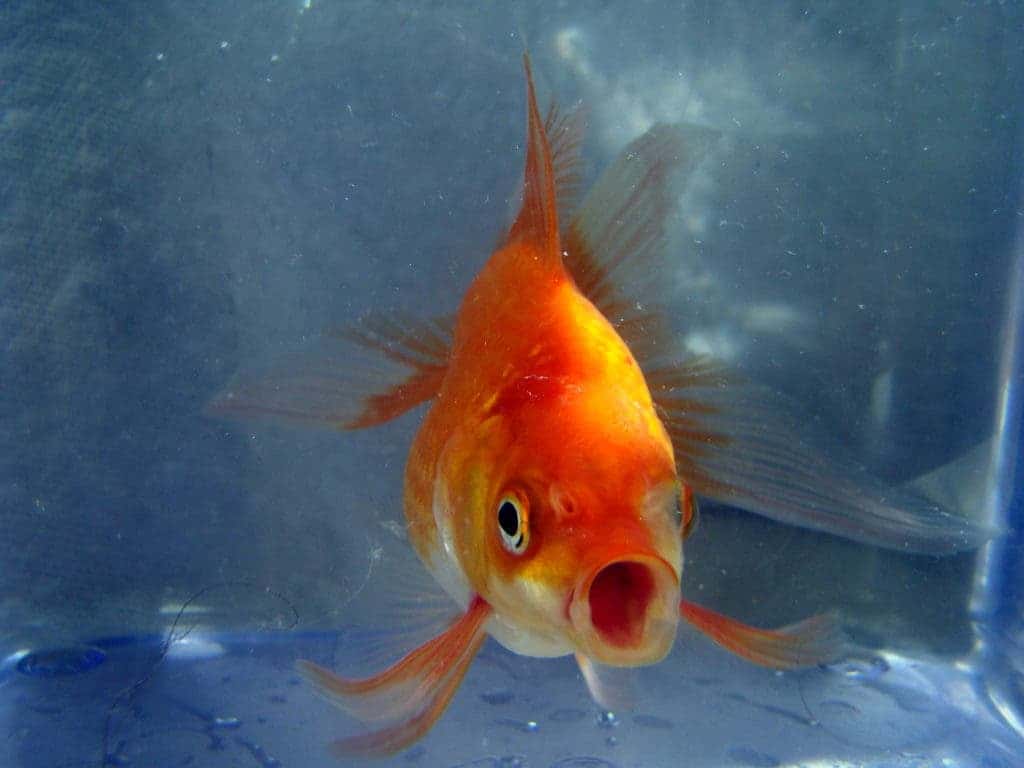Goldfish are some of the most resistant fish out there; that’s why they make good pets. They can survive in a bowl and almost any pond of fresh water. They can also survive the winter with no oxygen. Most vertebrates die after a few minutes without oxygen, our bodies need it to survive. However, goldfish and their wild kin, crucian carp, both can survive for months without oxygen at the bottom of ice-covered ponds. They turn dangerous byproducts of oxygen-less energy production into alcohol. In fact, their alcohol levels are so high that if they were driving they’d be above the legal limit.
Cells get energy from breaking down sugars, but they need oxygen. When vertebrates run out of oxygen, their cells turn to anaerobic respiration to produce energy. However, it creates lactic acid as an end product. This is why your legs burn when you run for a long time, the muscles have depleted their oxygen and have to produce energy without it, which produces the acid. Too much lactic acid is dangerous. Goldfish can survive without oxygen because they take this lactic acid and convert it into ethanol which flows across their gills out into the water. It keeps lactic acid from building up to a harmful quantity.

“During their time in oxygen-free water in ice-covered ponds, which can last for several months in their northern European habitat, blood alcohol concentrations in crucian carp can reach more than 50 mg per 100 millilitres, which is above the drink drive limit in these countries. However, this is still a much better situation than filling up with lactic acid, which is the metabolic end product for other vertebrates, including humans, when devoid of oxygen,” said Michael Berenbrink, an evolutionary physiologist at the University of Liverpool.
A team from the Universities of Liverpool and Oslo have just discovered how goldfish and crucian carp are able to turn lactic acid into ethanol. Before this study, it was thought that just brewer’s yeast (the yeast used in beer and bread) was able to do this. It was never seen in a vertebrate before.
The fish have two sets of the proteins that direct carbs to get broken down, which is essential to produce energy. The first set is nothing special, it is pretty much the same as in other species. However, the second is activated when there isn’t any oxygen and directs substances to produce ethanol outside the mitochondria.
At some point, the goldfish ancestor ended up with too many chromosomes, perhaps from an improper halving in the eggs and sperm. Then there were two sets of the same protein. The copy could end up with interesting mutation, but the original was still there as a backup to perform the important function. This genome duplication likely occurred around 8 million years ago. Due to these mutations, these two fish species are the only ones that can survive in cold ponds without oxygen. It’s a win-win for them because they can live in water without other fish to compete with or who would eat them.
Journal reference: Cathrine E. Fagernes, Kåre-Olav Stensløkken, Åsmund K. Røhr, Michael Berenbrink, Stian Ellefsen, Göran E. Nilsson. Extreme anoxia tolerance in crucian carp and goldfish through neofunctionalization of duplicated genes creating a new ethanol-producing pyruvate decarboxylase pathway. Scientific Reports, 2017; 7 (1) DOI: 10.1038/s41598-017-07385-4


